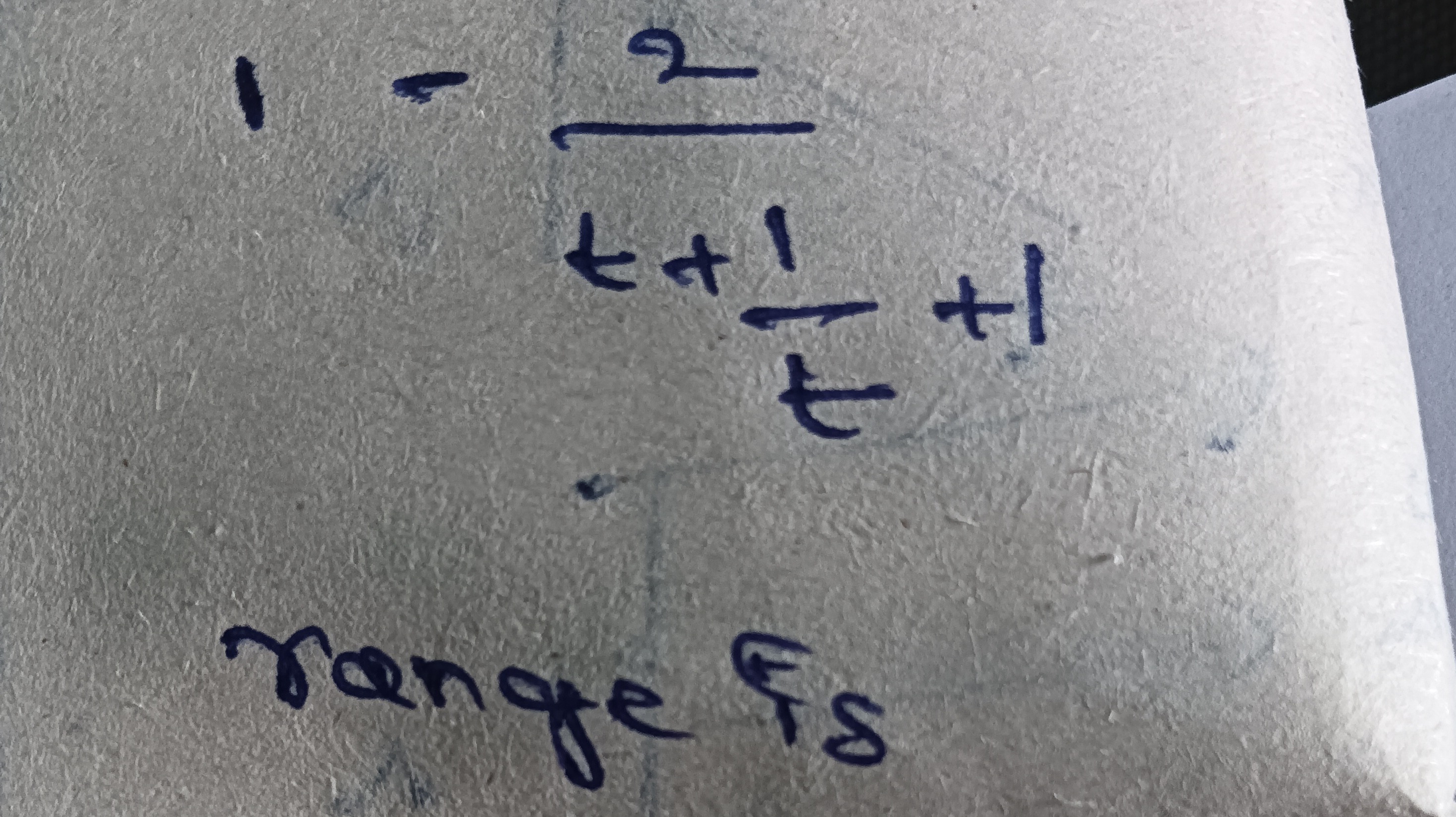Question
Question: $1-\frac{2}{t+\frac{1}{t}+1}$...
1−t+t1+12

Answer
The range of the expression 1−t+t1+12 is [31,1)∪(1,3].
Explanation
Solution
Let the given expression be E. E=1−t+t1+12
We assume t is a real number and t=0 for the expression to be defined.
-
Analyze the term y=t+t1:
- For t>0, by AM-GM inequality, t+t1≥2t⋅t1=2. The minimum value is 2 (at t=1). As t→0+ or t→∞, y→∞. So, for t>0, y∈[2,∞).
- For t<0, let t=−u where u>0. Then y=−u−u1=−(u+u1). Since u+u1≥2, we have y≤−2. The maximum value is -2 (at t=−1). As t→0− or t→−∞, y→−∞. So, for t<0, y∈(−∞,−2].
- Combining both cases, the range of y=t+t1 is (−∞,−2]∪[2,∞).
-
Analyze the denominator D=t+t1+1:
- Let D=y+1.
- If y∈[2,∞), then D∈[2+1,∞+1)=[3,∞).
- If y∈(−∞,−2], then D∈(−∞+1,−2+1]=(−∞,−1].
- The range of D is (−∞,−1]∪[3,∞). Note that D is never zero for real t, as t2+t+1=0 has no real roots.
-
Analyze the term D2:
- If D∈[3,∞): As D ranges from 3 to ∞, D1 ranges from 31 to 0. Thus, D2∈(0,32].
- If D∈(−∞,−1]: As D ranges from −∞ to −1, D1 ranges from 0 to −1. Thus, D2∈[−2,0).
- The range of D2 is [−2,0)∪(0,32].
-
Analyze the expression E=1−D2:
- If D2∈(0,32]: E=1−(a value in (0,32]). The range is [1−32,1−0)=[31,1).
- If D2∈[−2,0): E=1−(a value in [−2,0)). The range is (1−0,1−(−2)]=(1,3].
-
Combine the ranges: The total range of the expression E is the union of the ranges from the two cases: [31,1)∪(1,3].
